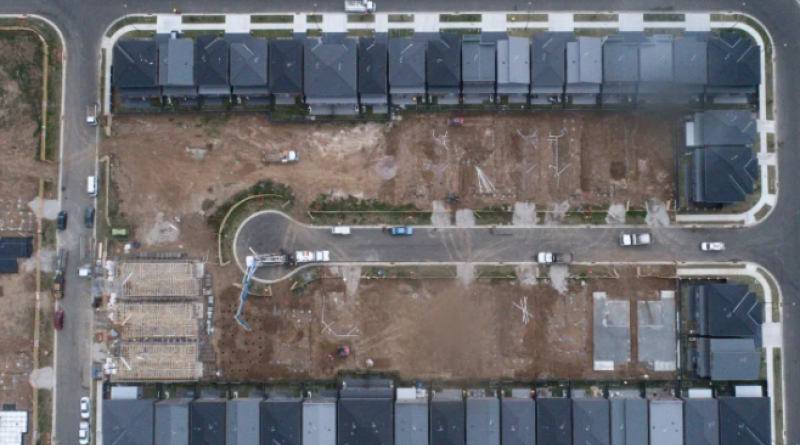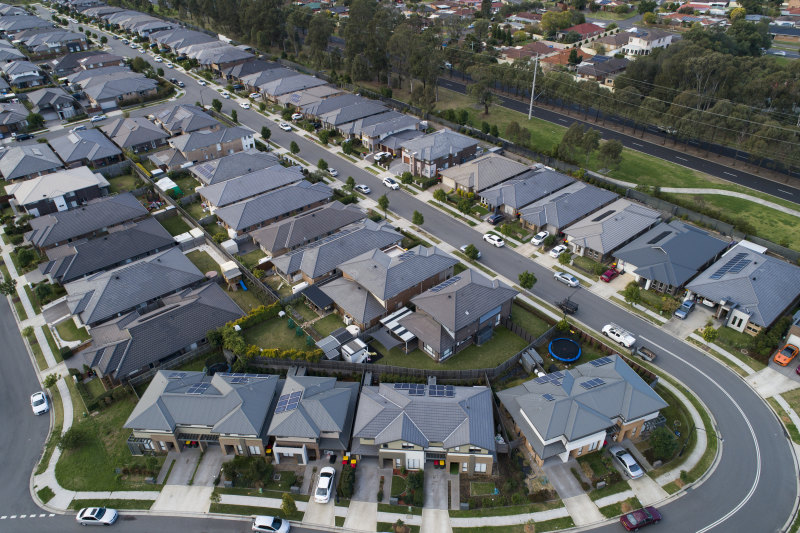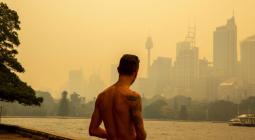‘Blistering temperatures’: Dark roofing banned on Sydney’s urban fringe

Dark roofing will be banned in Sydney’s south-west growth area in an attempt by the NSW government to dial back the heat island effect while providing sorely needed new homes.
Lighter coloured roofs will be a mandatory part of the planning controls for the Wilton area, busting the march of Colorbond Ironstone that has long been synonymous with Australian urban sprawl.
Residential lots must also be big enough for a tree in every backyard under a new set of rules applauded by urban-heat scientists as a step towards addressing rising temperatures following the grim picture painted by the latest Intergovernmental Panel on Climate Change report.
NSW Planning and Public Spaces Minister Rob Stokes said the report showed if the planning system didn’t take the construction of buildings and infrastructure more seriously, there could be catastrophic impacts on health, the economy and environment. He said Wilton demonstrated how the issue could be confronted.
“Western Sydney already experiences blistering temperatures of over 50 degrees in summer. The need to adapt and mitigate urban heat isn’t a future challenge – it’s already with us,” Mr Stokes said, adding that the report would also be used to influence the government’s major city-planning draft policy, Design and Place.
“When designing lots for detached housing, we need backyards which are big enough to plant a tree or have a garden. We need to say goodbye to the trend of having dark roofs that not only attract and retain heat and raise ambient street temperatures, but lead to astronomical electricity bills because of the need to cool homes.”

As well as requiring light-coloured roofing, the development controls prescribe that, for a residential lot of 15 by 18 metres, there needs to be a tree of at least eight metres mature height in the front and backyards, among rules for various lot sizes in the area where more than 9000 homes are expected to be built.
Western Sydney University urban heat expert Sebastian Pfautsch has gauged the canopy cover of various suburbs and found a section of Marsden Park, in the north-west, has 1 per cent, while parts of Wahroonga, on the upper north shore have more than 60 per cent.

He described the ongoing problem with dark roofs as “really low-hanging fruit to resolve” in terms of heat mitigation, and came down to aesthetic choice that had been left unaddressed.
“It’s there, it’s just Colorbond, we love Colorbond in Australia but why we are not using more of the white than the black ... I don’t know why,” Dr Pfautsch said.
He said if the planning system persisted with freestanding homes, they needed to be more vertical, with lower floor space, allowing for greater ventilation, evaporative cooling and passive circulation, adding, “We need to move away from flat and wide.”
University of NSW Professor Mattheos Santamouris, who has had an extensive career researching urban heat, said so-called “cool roofs” could decrease the energy consumption of uninsulated buildings in western Sydney by up to 50 per cent, and several countries already regulated this.
He said western Sydney, where summer extremes were consistently far hotter than the east, was affected by desert winds, and radiant temperatures from dark roofing exacerbated the synoptic effects of this.
However, Stephen McMahon, NSW branch president of the Urban Development Institute of Australia, and a developer involved in building the Wilton town centre, said the lobby supported the environmental aims, but the controls were “ill-conceived and unworkable”, and he objected to rules requiring “every roof to be painted white.”
“It will result in bureaucratically imposed blandness for new communities and will bring negligible improvement in thermal performance that could be achieved through new technologies in insulation, approaches to building design and shading, and other measures,” he said.
“We also object to the control that requires bigger backyards for the planting of trees ... How will government police compliance with this? Will swimming pools and garden sheds be prohibited?”
23 August 2021
smh





